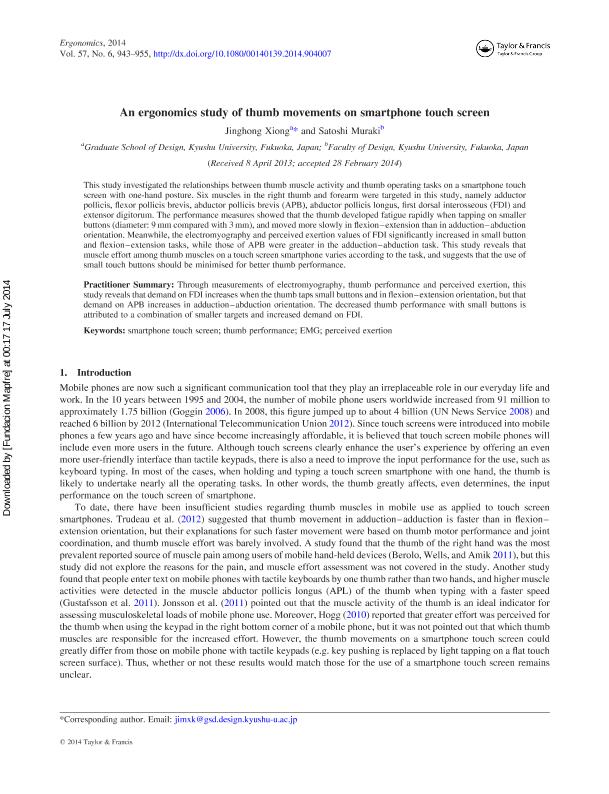An Ergonomics study of thumb movements on smartphone touch screen

Contenido multimedia no disponible por derechos de autor o por acceso restringido. Contacte con la institución para más información.
| Tag | 1 | 2 | Valor |
|---|---|---|---|
| LDR | 00000cab a2200000 4500 | ||
| 001 | MAP20140025794 | ||
| 003 | MAP | ||
| 005 | 20140724124915.0 | ||
| 008 | 140717e20140602esp|||p |0|||b|spa d | ||
| 040 | $aMAP$bspa$dMAP | ||
| 084 | $a875 | ||
| 100 | 1 | $0MAPA20140012145$aXiong, Jinghong | |
| 245 | 1 | 3 | $aAn Ergonomics study of thumb movements on smartphone touch screen$cJinghong Xiong, Satoshi Muraki |
| 520 | $aThis study investigated the relationships between thumb muscle activity and thumb operating tasks on a smartphone touch screen with one-hand posture. Six muscles in the right thumb and forearm were targeted in this study, namely adductor pollicis, flexor pollicis brevis, abductor pollicis brevis (APB), abductor pollicis longus, first dorsal interosseous (FDI) and extensor digitorum. The performance measures showed that the thumb developed fatigue rapidly when tapping on smaller buttons (diameter: 9 mm compared with 3 mm), and moved more slowly in flexionextension than in adductionabduction orientation. Meanwhile, the electromyography and perceived exertion values of FDI significantly increased in small button and flexionextension tasks, while those of APB were greater in the adductionabduction task. This study reveals that muscle effort among thumb muscles on a touch screen smartphone varies according to the task, and suggests that the use of small touch buttons should be minimised for better thumb performance. | ||
| 773 | 0 | $wMAP20100019818$tErgonomics : the international journal of research and practice in human factors and ergonomics$dOxon [United Kingdom] : Taylor & Francis, 2010-$x0014-0139$g02/06/2014 Volumen 57 Número 6 - junio 2014 |

